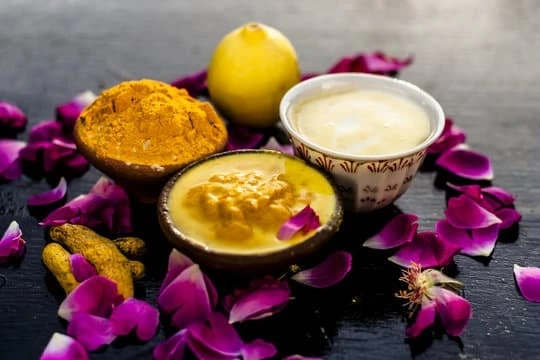When it comes to skincare, there is no one-size-fits-all approach. Each person has unique skin needs and concerns, which is why customizing your skincare routine is essential. One ancient beauty secret that has stood the test of time is ubtan.
Ubtan is a traditional Indian skincare remedy that has been used for centuries to achieve healthy and glowing skin. In this blog, we will explore different ubtan recipes for various skin types and provide tips on how to customize your skincare routine.
Ubtan for Dry Skin:
Dry skin requires gentle exfoliation and deep hydration. To make an ubtan face wash for dry skin, mix two tablespoons of besan (gram flour) with a teaspoon of raw honey, a tablespoon of milk cream, and a few drops of rose water.
Apply this paste on your face, gently massage in circular motions, and rinse off with lukewarm water. This ubtan face wash will cleanse, nourish, and moisturize your dry skin, leaving it soft and supple.
Ubtan for Oily Skin:
Oily skin needs a deep cleanse to remove excess oil and unclog pores. To create an ubtan face mask for oily skin, combine two tablespoons of Multani mitti (fuller\'s earth) with a teaspoon of sandalwood powder, a pinch of turmeric, and enough rose water to form a paste.
Apply this mask evenly on your face, let it dry for 15-20 minutes, and rinse off with cold water. This ubtan face mask will absorb excess oil, tighten your pores, and give your skin a matte finish.
Ubtan for Combination Skin:
Combination skin requires a balanced approach to address both dry and oily areas. For an effective ubtan face mask for combination skin, mix one tablespoon of besan with a teaspoon of yogurt, a teaspoon of lemon juice, and a teaspoon of honey.
Apply this mask on your face, avoiding the eye area, and leave it on for 15 minutes. Rinse off with lukewarm water. This ubtan face mask will help control oiliness in the T-zone while moisturizing the dry areas of your face.
Tips for Customizing Your Skincare Routine:
1. Patch Test: Before using any ubtan recipe, perform a patch test on a small area of your skin to check for any allergic reactions or irritation.
2. Frequency: Incorporate ubtan recipes into your skincare routine 1-2 times a week. Overuse may lead to excessive exfoliation or dryness.
3. Additional Ingredients: Feel free to customize your ubtan recipes by adding ingredients that suit your skin\'s needs. For example, you can add a few drops of almond oil for extra hydration or aloe vera gel for soothing properties.
4. Consistency: Consistency is key when it comes to skincare. Stick to your ubtan routine for a few weeks to notice visible improvements in your skin\'s texture and appearance.
5. Sun Protection: Ubtan recipes can make your skin more sensitive to the sun. Always follow up with a broad-spectrum sunscreen with SPF 30 or higher to protect your skin from harmful UV rays.
6. Hydration: Regardless of your skin type, remember to drink an adequate amount of water daily to keep your skin hydrated from within.
Conclusion
Ubtan recipes provide a natural and customizable approach to skincare. By tailoring ubtan formulations to your specific skin type, you can address individual concerns and achieve a healthy and radiant complexion. Remember to follow the tips mentioned above and be consistent in your skincare routine to see the best results. Embrace the wisdom of ancient skincare rituals and unlock the power of ubtan for beautiful, glowing skin. Incorporate ubtan face washes and masks into your weekly skincare routine, and enjoy the benefits of this time-tested beauty secret.



